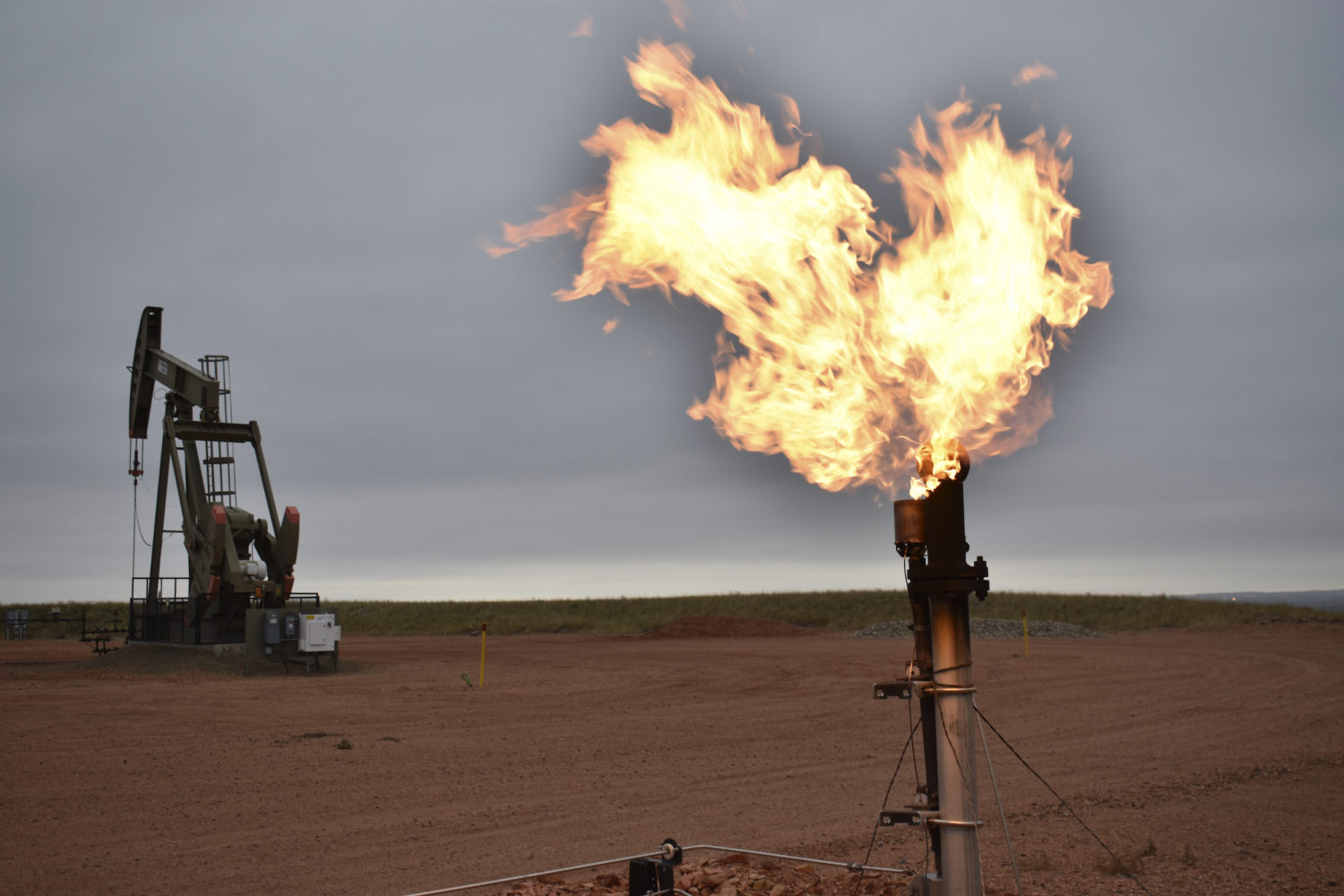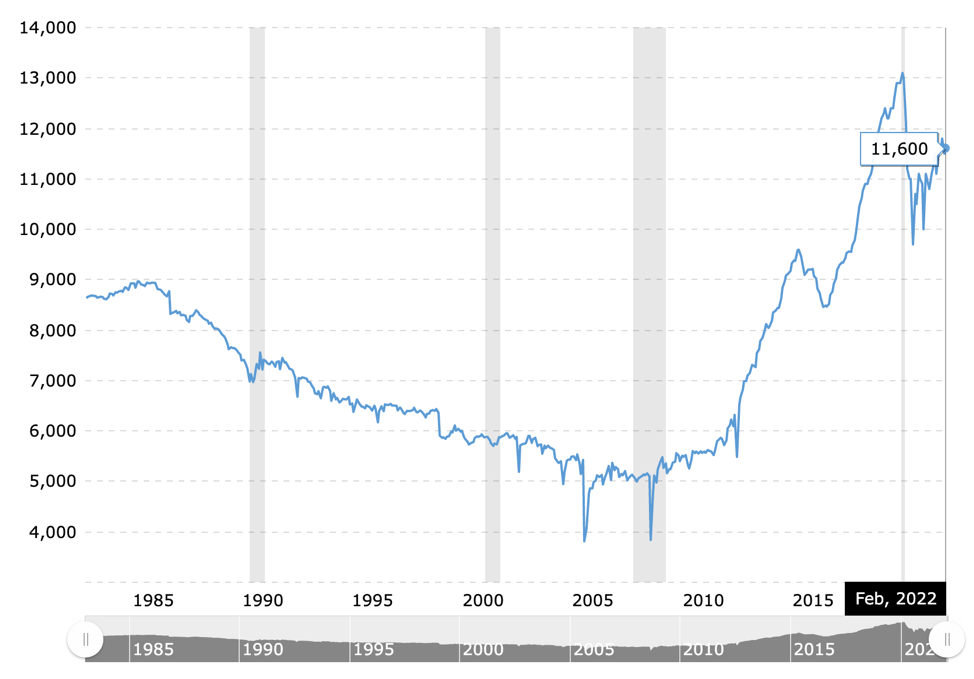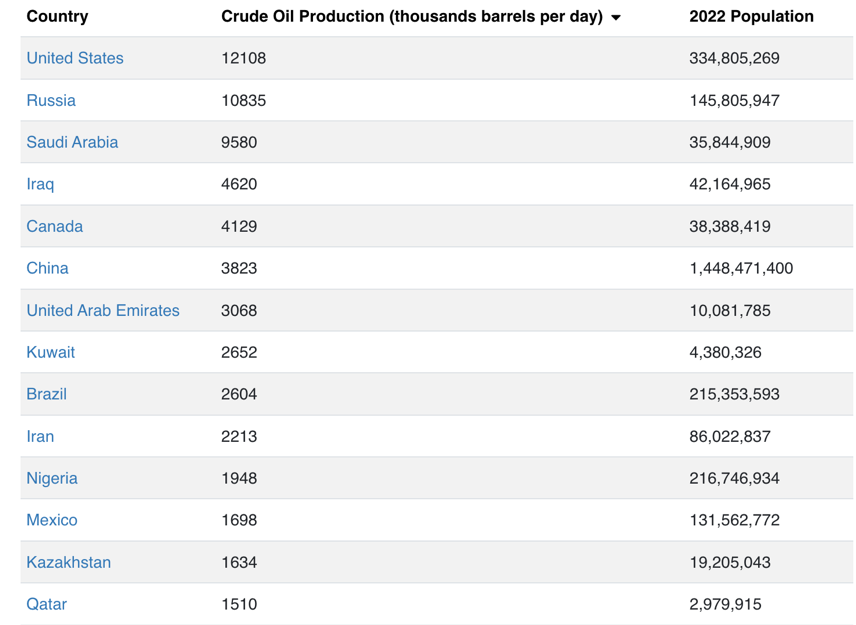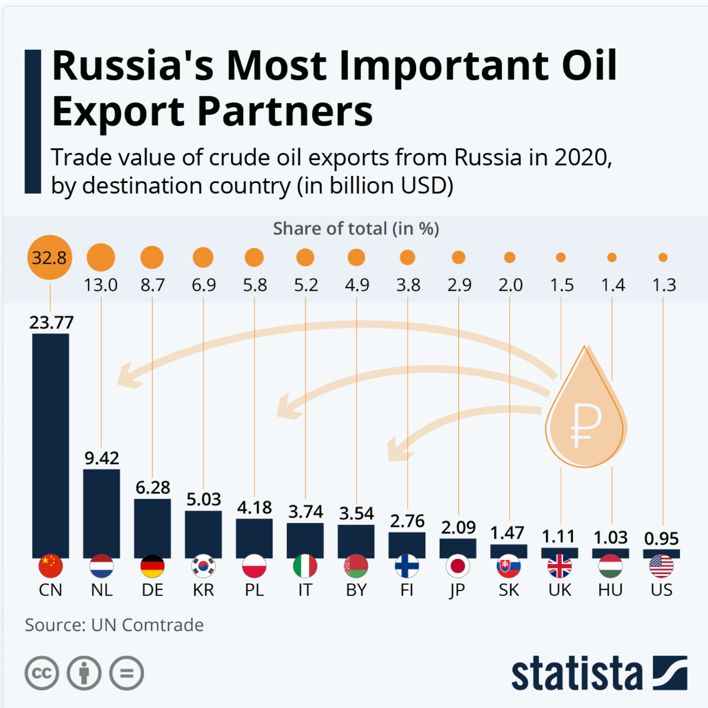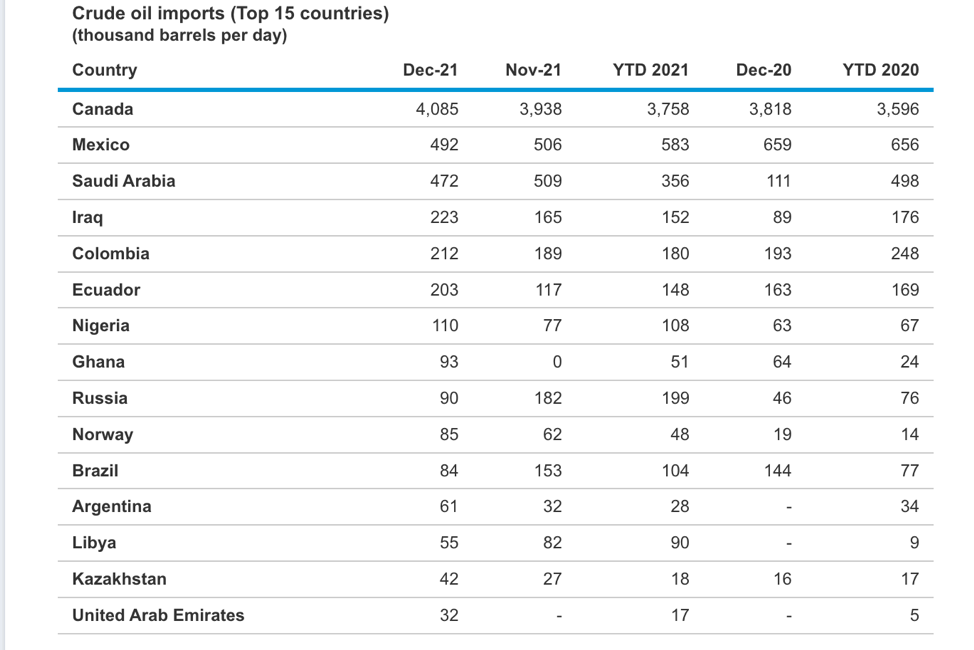 Covering COVID-19 is a daily Poynter briefing of story ideas about the coronavirus and other timely topics for journalists, written by senior faculty Al Tompkins. Sign up here to have it delivered to your inbox every weekday morning.
Covering COVID-19 is a daily Poynter briefing of story ideas about the coronavirus and other timely topics for journalists, written by senior faculty Al Tompkins. Sign up here to have it delivered to your inbox every weekday morning.
President Joe Biden’s ban on Russian oil imports will certainly add to quickly rising gasoline and diesel prices. If Americans are willing to pay more to support Ukraine against Russia’s invasion, the question might be, “For how long?”
Let’s look at how much oil the United States produces now. The figures below are shown in (thousands) of barrels per day.
We are producing about 11.6 million barrels a day now. The decline in production after 2020 is a reflection of the pandemic’s effect on demand. Donald Trump can rightfully claim that U.S. oil production peaked during his term.
And even though the U.S. has previously produced more oil than it is currently generating, the United States is still the biggest oil producer in the world. I wonder how many people believe that Middle Eastern countries outproduce the U.S.?
Given those production levels, consider that in 2020, the United States consumed an average of about 18.19 million barrels of petroleum per day.
You can see from the chart that when fuel demands dropped so drastically in the pandemic, 260 oil companies filed bankruptcy and many stopped new drilling projects. Even before the president’s announcement that the U.S. would stop importing Russian oil, U.S. oil companies planned to increase production by a million barrels this year, which would put it close to the 2019 peak.
There is a notion that makes its way around political circles that the U.S. no longer exports oil, which is not true. The biggest customers are Mexico, Canada and China. By the way, the turmoil over Russian oil is resurrecting talk about whether to bring the Keystone XL Pipeline back to life. One Canadian premier says it would be a good idea.
Even while oil companies say they are boosting U.S. production as quickly as they can, “right away” in their world does not mean overnight. Politico reports:
Exxon Mobil and Chevron are both boosting oil production at the mammoth Permian Basin field in West Texas and New Mexico, strategies that both oil majors laid out last year but that have taken on new urgency because of the surge in oil prices to their highest level in 14 years.
Exxon has said it expected to increase its production from the Permian by 100,000 barrels per day this year, on top of a sharp ramp up last year to 460,000 barrels per day. “We’re well on our way to that,” CEO Darren Woods told an industry conference in Houston on Monday. Chevron has also said it would increase its production there by 60,000 barrels per day this year.
Biden plans to release 30 million barrels of oil from the Strategic Petroleum Reserve, but remember, that is equal to about four days of production. Typically, such strategic releases make for good news copy and help a president appear to be taking action, but in the big picture, it does not have a long-lasting effect.
Who else uses Russian oil?
As you think through why China has so little to say about Russia’s invasion of Ukraine, consider this factor: A third of Russia’s oil exports go to China.
Experts say Germany could see oil costs more than double, maybe as high as $300 a barrel. Some of the big Russian oil-importing countries — including Italy, the Netherlands, France, Romania and Poland — have gotten deliveries that were already under contract before the invasion.
For all the attention Russia is getting, Canada, by far, is the biggest exporter of oil to the U.S. and nobody else is close. This is U.S. Department of Energy data through the end of last year:
What about U.S. natural gas production?
The U.S. Department of Energy says, “In 2020 and 2021, more than 2,000 miles of new liquids pipelines were brought into service, according to the Liquids Pipeline Projects database. Several of these recent infrastructure projects were dedicated to transporting a mix of natural gas plant liquids (NGPLs), which are produced at natural gas processing plants from raw natural gas streams.”
‘Putin’s price hike.’ High gasoline prices will cost you in a million ways
Do not be surprised if, in the days ahead, you hear President Biden use the phrase “Putin’s price hike” similarly to how Donald Trump called COVID-19 the “China virus.” He will do all he can to put the blame for the rapid price increases you are about to pay on Putin.
One of the most difficult things a president can do is prepare the country for discomfort. And discomfort is coming. “Defending freedom is going to cost,” Biden said Tuesday.
The shockingly sudden rise in gasoline prices will hit your wallet in ways you may not have considered.
Lawn services are usually among the first to add fuel surcharges when the price of gas goes up fast. Lawn services don’t have the problem of regulatory agencies telling them what to charge. I have noticed that once the price goes up, it does not seem to come down, even when fuel prices drop.
Taxi and ride-sharing services can’t possibly absorb such enormous fuel charges without passing them on to you. In some cases, they will have to get regulatory approval, which could move slowly.
Think about the other big fleets that use a lot of fuel, from school systems that have to keep buses on the road to police departments and local and state road departments. Check with your local governments and school systems to see how they will adjust to these unexpected costs.
How is mass-transit ridership now that the cost of commuting is rising? Over the years, studies have tried to prove a correlation and causation between the price of fuel and mass transit use. Generally, bus and light rail ridership go up when fuel prices rise, but the cost has to rise a lot to see much of a change. And higher fuel prices make it more expensive for transit situations to operate. Here’s an example: The San Luis Obispo Regional Transit Authority in California said it is already over its fuel budget for the year, but ridership is up 27% over last year, which of course was a pandemic year. KSBY TV reports:
SLO RTA officials say this wouldn’t be the first time they see a jump in people transitioning to public transportation.
“If we look back in history, the last time was in 2012 or 2013 where the gas price went over $4.50, we saw a huge increase in passengers year over year from 2013-2015-2016,” said McPherson.
The difference now is there are other challenges for transit companies including COVID-19 and driver shortages.
Is the work-from-home movement finding another reason to pressure employers to allow workers to stay home and spare the commuting costs?
US businesses owned by Russian immigrants are targeted by haters
Russian restaurants in New York City have a public relations problem. Even though many of the owners are openly against the war, or are even Ukrainian, they are getting burned by reservation cancellations, social media campaigns and bad reviews online at a time when restaurants, in general, are still reeling from the shutdowns and restrictions of Covid-19. Some places have even been vandalized.
The last time we saw something like this was when people started canceling reservations at Chinese restaurants at the start of the pandemic. Truly none of that helps anybody.
We’ll be back tomorrow with a new edition of Covering COVID-19. Are you subscribed? Sign up here to get it delivered right to your inbox.

